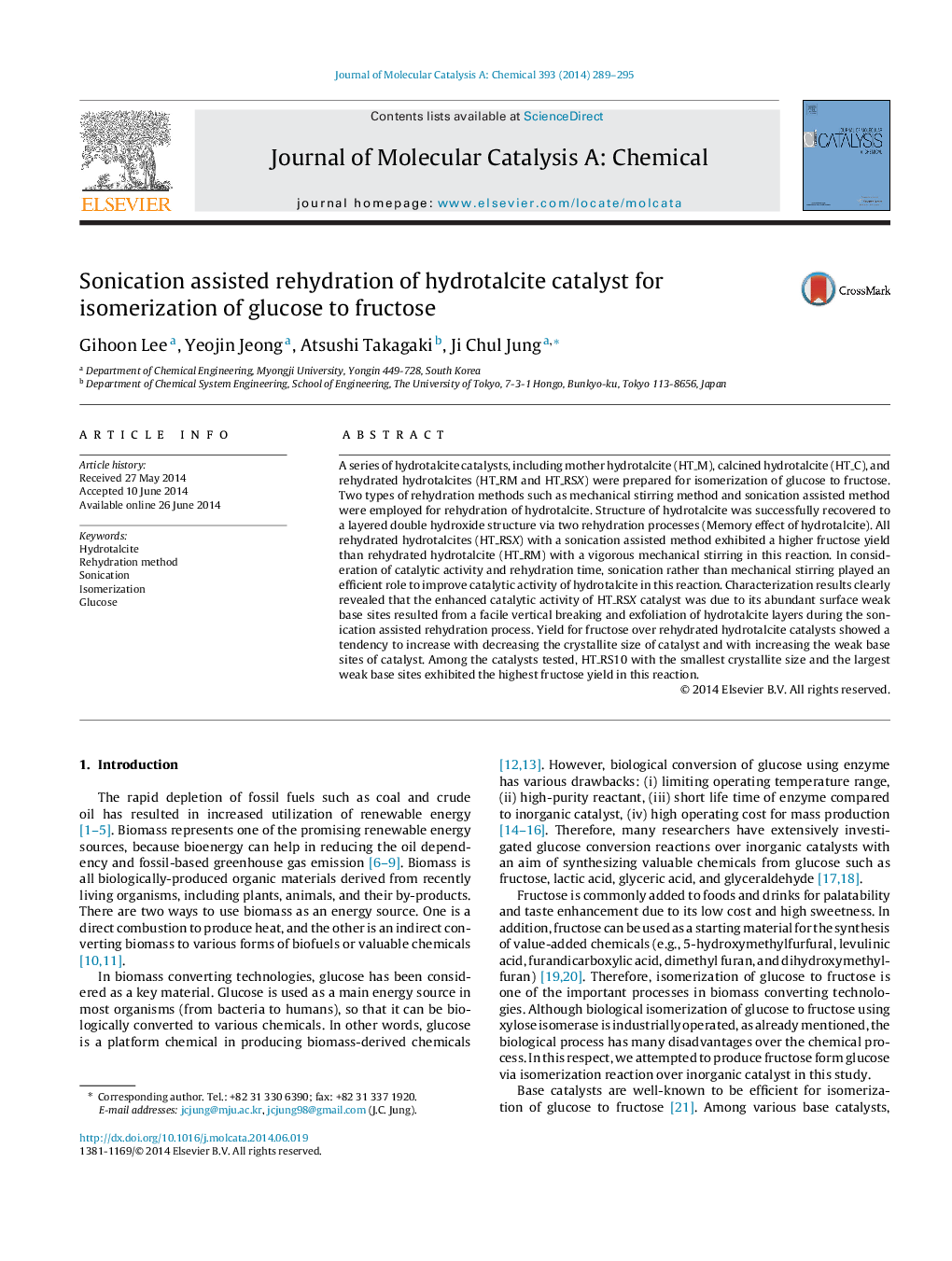| کد مقاله | کد نشریه | سال انتشار | مقاله انگلیسی | نسخه تمام متن |
|---|---|---|---|---|
| 65393 | 48389 | 2014 | 7 صفحه PDF | دانلود رایگان |

• Hydrotalcite catalyst was successfully rehydrated using two methods.
• Rehydrated hydrotalcites were applied to the isomerization of glucose to fructose.
• Crystallite size and weak basicity of hydrotalcite played a key role in this reaction.
• Sonication was a good way for rehydration of hydrotalcite catalyst for this reaction.
A series of hydrotalcite catalysts, including mother hydrotalcite (HT_M), calcined hydrotalcite (HT_C), and rehydrated hydrotalcites (HT_RM and HT_RSX) were prepared for isomerization of glucose to fructose. Two types of rehydration methods such as mechanical stirring method and sonication assisted method were employed for rehydration of hydrotalcite. Structure of hydrotalcite was successfully recovered to a layered double hydroxide structure via two rehydration processes (Memory effect of hydrotalcite). All rehydrated hydrotalcites (HT_RSX) with a sonication assisted method exhibited a higher fructose yield than rehydrated hydrotalcite (HT_RM) with a vigorous mechanical stirring in this reaction. In consideration of catalytic activity and rehydration time, sonication rather than mechanical stirring played an efficient role to improve catalytic activity of hydrotalcite in this reaction. Characterization results clearly revealed that the enhanced catalytic activity of HT_RSX catalyst was due to its abundant surface weak base sites resulted from a facile vertical breaking and exfoliation of hydrotalcite layers during the sonication assisted rehydration process. Yield for fructose over rehydrated hydrotalcite catalysts showed a tendency to increase with decreasing the crystallite size of catalyst and with increasing the weak base sites of catalyst. Among the catalysts tested, HT_RS10 with the smallest crystallite size and the largest weak base sites exhibited the highest fructose yield in this reaction.
Figure optionsDownload high-quality image (96 K)Download as PowerPoint slide
Journal: Journal of Molecular Catalysis A: Chemical - Volume 393, 1 November 2014, Pages 289–295